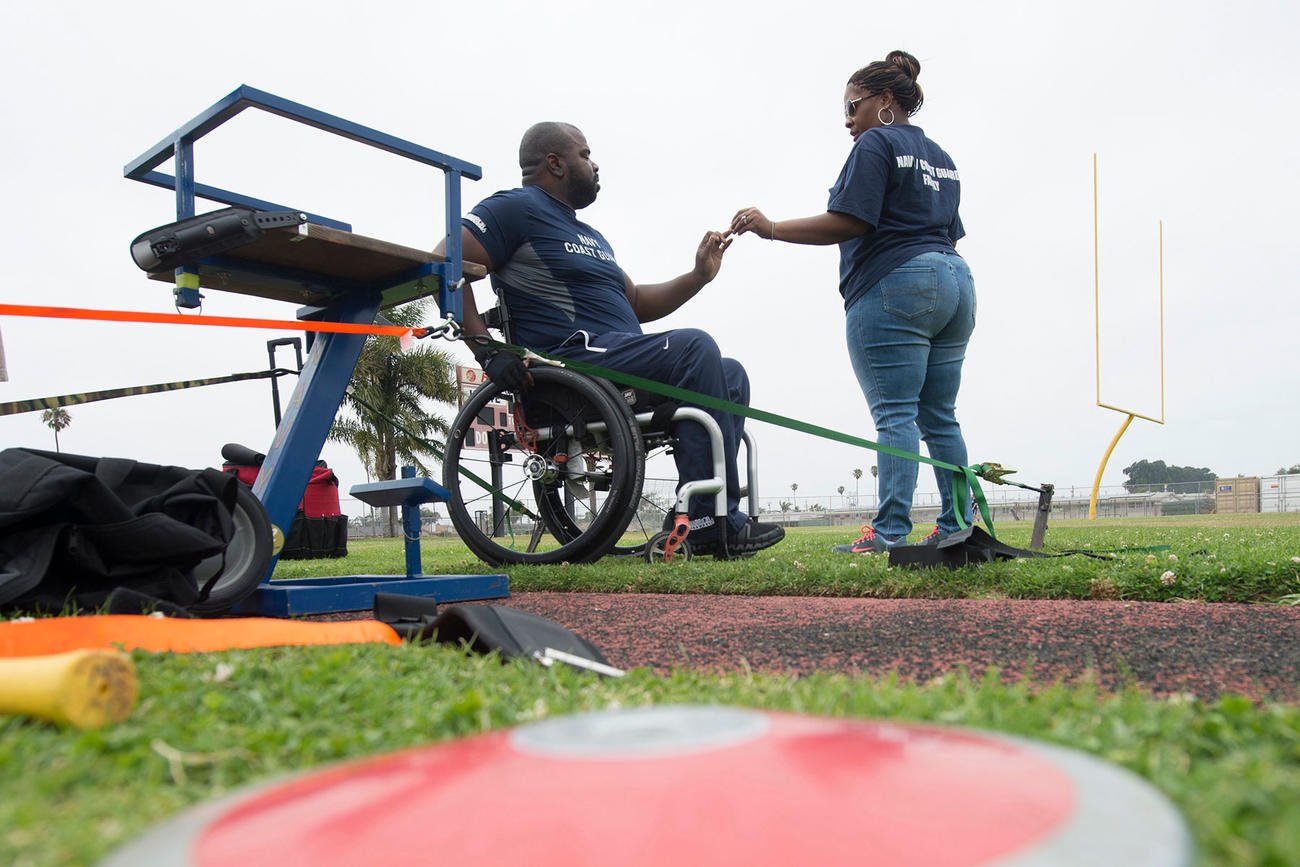
Veteran and military caregivers spend an average $11,500 of personal income each year on out-of-pocket expenses related to supporting their loved ones, 150% more than other family caregivers in the U.S., according to new data from AARP and the National Alliance for Caregiving.
More than 6.5 million veterans and military caregivers provide $14 billion in unpaid labor caring for their service members each year, even as the Department of Veterans Affairs offers extensive services for caregivers.
Advocates say the striking disparity means more must be done to ensure that veteran caregivers are aware of the resources available, not only through the VA, but through nonprofits that aim to ease their financial and emotional stress.
Read Next: Veterans, Advocates Want Blood Cancers Added to PACT Act List of Burn Pit-Related Conditions
According to AARP and the National Alliance for Caregiving, 43% of veteran and military caregivers experienced at least one financial setback such as having to take on debt or use personal savings to cover personal expenses related to caregiving, including transportation and travel, respite care, geriatric services and more.
Amy Goyer, AARP’s caregiving expert, learned late in her caregiving experience for her parents that her father was eligible for veterans benefits. For Goyer, knowing that earlier may have helped prevent her from having to declare bankruptcy, she said.
“My dad had not needed help, so [the VA] wasn’t something he’d applied for,” Goyer said Friday in an interview with Military.com. “Unfortunately, I didn’t really get that going until the last few years of his life. That’s one of the things I wish I would have done differently, because I think it would have made a huge difference over the long haul.”
AARP published an extensive report in 2020 on the status of caregivers in America, noting that 39.8 million people are supporting or responsible for helping a loved one over the age of 18.
In its 2021 Caregiving Out-of-Pocket Costs Study survey, AARP found that on average, family caregivers spend 26% of their income on caregiving activities, an average $7,242 per year.
AARP released the $11,500 veteran caregiver out-of-pocket figure last week after discovering it had a “reasonable sample” among veteran respondents to the 2021 survey.
The report did not explore the reasons why veteran caregivers pay significantly more out of their own pockets than non-veteran caregivers. Goyer said veterans tend to be younger and require care over a long period of time.
They may have more intensive care or mental health needs, she said, and they may be unable to work, placing more of the household financial burden on the caregiver.
“The key thing is that clearly there probably are multiple factors that contribute to that higher amount,” Goyer said.
Under its VA Caregiver Support Program, the VA manages two different programs: the Program of General Caregiver Support Services, or PGCSS, and the Program of Comprehensive Assistance for Family Caregivers, also known as the Family Caregiver Program or PCAFC.
The PGCSS provides peer support, skills training, coaching and referrals, as well as information on self-care and mental health.
The Family Caregiver Program provides eligible caregivers stipends and support, including medical services, for providing care to severely injured or disabled veterans who otherwise would require a home health aide or nursing assistant.
By calling the VA Caregiver Support Program, Goyer was able to get her dad enrolled in VA care, learn about aid and attendance benefits for those who are housebound, get access to respite care, and pay for some medical supplies that weren’t covered by Medicare through the VA’s Office of Geriatrics and Extended Care.
According to the VA, the department supported 74,270 family caregivers in fiscal 2023, including roughly 30,000 who are enrolled in the Family Caregiver Program, which is currently under review as a result of changes to eligibility requirements that followed an expansion of the program to include combat veterans from all eras.
The proposed set of requirements could have resulted in up to 90% of enrolled veterans becoming ineligible for the program, prompting the review and a halt to any dismissals from the program while the rules are being reconsidered.
An executive order issued in April by President Joe Biden directed the VA, among other things, to consider announcing any proposed changes to the PCFAC eligibility rules by the end of the fiscal year, Sept. 30. An announcement has not been made.
Meanwhile, those who are enrolled in the program were extended through September 2025 while VA continues its review.
Goyer suggested that caregivers obtain the services of a financial adviser to ensure that they remain solvent while supporting a loved one.
Noting that roughly 34% of veterans use their earned VA health-care benefits, she also recommended that caregivers of veterans ensure their loved ones are enrolled at VA — a move that will give them access to care and services and caregiving benefits, especially as they age.
“We have … people who were not career military and don’t realize that they aren’t eligible for some support,” Goyer said. “On the flip side, people who are used to just working with the VA don’t think about other community services, such as aging and disability resource centers.”
Goyer and Shawn Moore, the financial wellness program manager for the Elizabeth Dole Foundation, will host a webinar on the financial impact of veteran and military caregiving on Wednesday, Nov. 15, at 7 p.m. EST.
The webinar will provide insight and advice on securing one’s finances as a caregiver, especially for veterans with long-term care needs.
— Patricia Kime can be reached at Patricia.Kime@Military.com. Follow her on X @patriciakime
Related: They Spent Years Caring for Their Veterans. Now They Are Losing a Lifeline.









